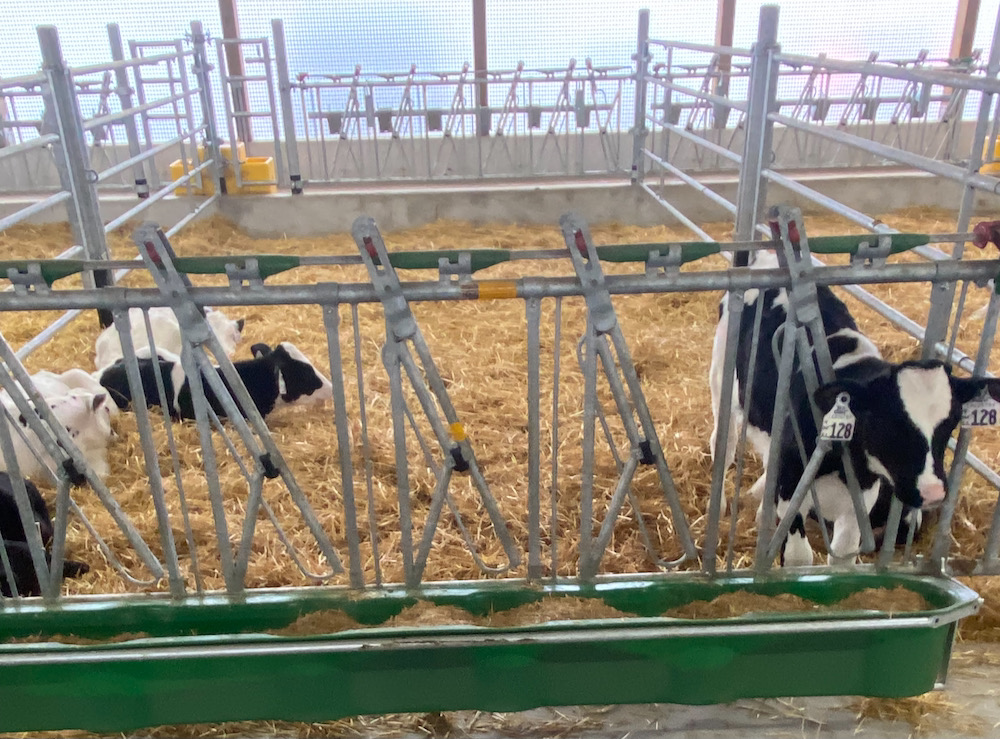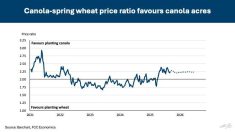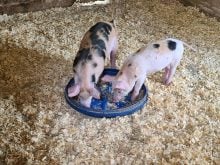This was first published by Dairy at Guelph.
Feeding enough high-quality colostrum soon after birth is critical for calf health and has long-term effects on their performance.
But could there be benefits of feeding colostrum after passive transfer of antibodies is expected to occur?
Read Also

Partnerships, communication key to disease management
Communication and strong, trusted partnerships are key to managing infectious diseases like Foot and Mouth Disease and HPAI.
That’s what a recent study by Prof. Michael Steele and MSc. student Hannah McCarthy aimed to find out.
The research team from the University of Guelph’s Ontario Agricultural College (OAC) sought to understand the effects of colostrum supplementation beyond the first day of life in Holstein heifers.
They studied the effects of adding colostrum replacer to milk feeding on growth, serum IgG, and the risk of diarrhea, bovine respiratory disease (BRD) and mortality in early life.
The team studied 200 Holstein heifer calves at a large commercial dairy farm in Ontario, splitting them into four treatment groups. All calves received two feedings of colostrum replacer within 12 hours of birth.
- Control group: Calves were fed 450 grams of milk replacer twice daily between two to 14 days of age.
2. Transition group: Received a mixture of 380 grams of colostrum replacer and 225 grams milk replacer twice daily on days two and three, then 450 grams of milk replacer alone twice daily from days four to fourteen.
3. Extended group: Received a mixture of 45 grams colostrum replacer and 450 grams of milk replacer twice daily from days two to 14.
4. Combined transition and extended group: Received 380 grams of colostrum replacer and 225 grams of milk replacer twice daily on days two and three, then 45 grams of colostrum replacer and 450 grams of milk replacer twice daily from days four to 14.
From day 15 to 41, all calves were fed 600 grams of milk replacer twice per day.
The study required an intensive schedule, with the team working in shifts overnight at the farm to be there when calves were born and to deliver the rigorous feeding and sampling schedule over 49 days for each calf.
To track calf health, blood samples were taken daily until day seven and then weekly until day 49. Weight was recorded at birth weekly until day 49. Health assessments were done daily to detect BRD and diarrhea.
Key findings:
Colostrum supplementation beyond the first day of life improved health and growth in pre-weaned calves.
Calves in the extended and transition treatment groups had increased average daily gain at weeks two and three, decreased risk of diarrhea in the first three weeks of life, and increased odds of survival over the preweaning period compared to the control calves. There was no difference in BRD.
Future research could seek to optimize the amount of colostrum to use to support health and growth.
“This method, which originated in Germany, is already common in other animal industries, such as broiler chickens,” Steele says. “It could change the way we feed calves in the dairy industry, particularly at the two to three weeks age when we know that they’re especially susceptible to diarrhea.”
The importance of keeping calf health records was echoed by another study by PhD researcher Dr. Kristen Edwards at Ontario Veterinary College (OVC), who found improved record keeping for calves when the recording is done near the calves.
For more information read the full study results in the Journal of Dairy Science or connect directly with Dr. Michael Steele, Department of Animal Biosciences.












